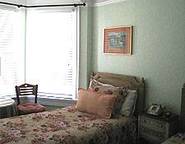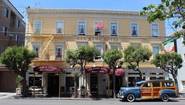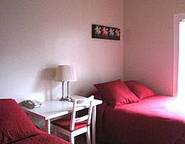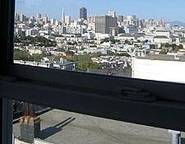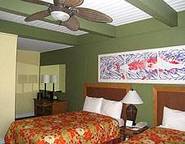Hills, pretty vistas and more hills make San Francisco a treat and a challenge to navigate. And the extensive public transportation system here can seem like a complicated beast. But never fear—we’ll help you decipher BART from Muni and trolleys from cable cars (yes, there is a difference).
Getting Around San Francisco

BART
BART (Bay Area Rapid Transit) is the regional metro system that connects the city to suburbs throughout the Bay Area. It mainly functions as a commuter railway, but services eight stops within the city, connecting the Embarcadero to the Mission District. It’s also a great option for day trips to Berkeley and Oakland.
Trains operate seven days a week from 4 a.m. until 12:30 a.m. Ticket prices are based on the distance traveled. Simply load your card with the desired amount (a chart next to the ticket machines at each station lists fares from that station to all others), and when you depart at your destination, the fare will be deducted and the new balance displayed. The maximum fare for travel within San Francisco (from the 24th Street Mission station to the Embarcadero station) is $4 one way.
If you plan to use BART for day trips or to get to and from the airport, consider adding a large amount at once: There is a 6.25% discount if you load a card with an increment of $48 or $64. Seniors receive a 62% discount on BART tickets.
For more information, visit the BART Web site
Buses
In addition to BART, San Francisco is serviced by a large network of buses, light rail vehicles and streetcars. All are operated by the Municipal Rail System, lovingly referred to as “Muni” in San Francisco.
Muni’s bus system operates more than 80 lines that zig and zag their way through the city, offering stops within two blocks of 90% of all San Francisco residences. The name of each line is a number and the name of a street, neighborhood or landmark to which that line runs. The letter “L” after the bus number designates buses that run along the local route but make fewer stops. Express lines, marked by the letter “X,” connect the outskirts of the city with the major rail lines.
Wait times can be as little as two minutes on the busiest lines and as long as 20 minutes for buses between the outlying neighborhoods. Delays are not uncommon, as any local will tell you. Muni operates 24 hours a day. Late night “Owl” buses provide a more limited service from 1 a.m. until 5 a.m. For bus ticket prices, see the “Muni Tickets” section below.
Metro
The Muni Metro is a system of above- and below-ground light rail trains that connect southern and western neighborhoods to the downtown BART stations. The J line services the Mission District and the T runs from the Castro to the Embarcadero. The Sunset and Golden Gate Park can be reached on the L, M and N lines. Trains run from 4:30 a.m. until 1:30 a.m., when Owl buses take over.
Historic Streetcars
The Metro’s prettiest and most interesting line is by far the F line, which runs from the Castro to Fisherman’s Wharf. The stretch of the F line that runs along Market Street from from the Castro is serviced by a fleet of vintage streetcars, each painted to represent a different U.S. city.
The newest portion of the F line opened in 2000 and traces the water along Embarcadero, from the Ferry Building to Fisherman’s Wharf. Offering expansive views of the city and waterfront, the journey itself is a grand one, but the real treat is riding in one of the beautifully restored antique trolleys (not to be confused with cable cars), which hail from various cities throughout the world, including New Orleans, Louisiana, Oporto, Portugal and Melbourne, Australia.
The F line operates daily from 6 a.m. until after midnight, and streetcars run at least every 15 minutes (about every six minutes during daylight hours). For Metro ticket prices, see the “Muni Tickets” section below.
Cable Cars
San Francisco’s iconic cable cars, also operated by Muni, are both transit option and tourist attraction. Stand on the outside for the full, hanging on, wind in the hair, giddy effect.
The Powell-Mason line and the Powell-Hyde line both start downtown at the Powell Street turnaround, and both run through Chinatown and end near Fisherman’s Wharf. Note that there will almost always be a line at the turnaround. Do yourself a favor and walk up a couple blocks to the next stop (all the better to score that prime outside spot!).
The California Street line runs east-west through Nob Hill, from California and Market in the Financial District to Van Ness near Civic Center. This is the best bet for the line-averse. For ticket prices, see the “Muni Tickets” section below.
Muni Tickets
Tickets for buses and Metro cost $2 ($.75 for seniors), and can be purchased on board or at any light rail station. If purchasing on board, you’ll need exact change. And be sure to keep your ticket with you—not only is it good for a transfer within 90 minutes (not on BART or the cable cars), but you’re subject to a hefty fine if caught without it.
The cable cars are the only Muni branch that do not follow the standard ticket pricing. It costs a whopping $6 to ride uphill on these popular cars. There are ticket booths at major stops, or tickets can be purchased on board (exact change is not necessary). Note that the Muni passport (below) does cover cable car rides.
Muni passports are good for unlimited rides on all Muni transit, including cable cars. A one-day passport costs $14, a three-day passport costs $21 and a seven-day passport costs $27. Passports can be purchased in advance or at booths throughout the city. Visit the Muni Web site for locations and additional information.
For more information on all Muni services, visit the official Web site of the San Francisco Municipal Transportation Agency. Another helpful resource is 511.org, the Metropolitan Transportation Commission site which offers helpful information on transportation throughout the Bay Area, including a very thorough route planner.
Taxi
Taxis can be pricey, and Muni renders them unnecessary during daylight hours, but they can sometimes be a convenient option, especially at night. The meter starts at $3.10 and you’re charged $.45 for every one-fifth of a mile traveled or for every one minute of waiting in traffic. On out-of-town trips or those exceeding 15 miles, 150% is added to the metered rate.
It’s easy to hail a cab downtown or around the wharf (look for the lighted sign indicating availability), but you may need to call a service in other areas. Luxor Cab is a reliable option.
On Foot
Much of San Francisco is made up of steep hills, some so steep that steps are carved into the sidewalks. But for those undaunted by a little trekking, the rewards of walking include an up-close-and-personal look at some of the city’s gorgeous architecture, plus some truly winning views. Most areas you’ll want to see can be reached on foot, but do note that those hills will often make the journey longer than expected.
The Mission, Castro and Marina are three especially foot-friendly (read: less hilly!) areas. Do note that, while the city is quite safe, certain areas can turn from pleasant to unsavory in a matter of blocks. Hold onto your bags and always remain aware of your surroundings.
Related posts from our blog

